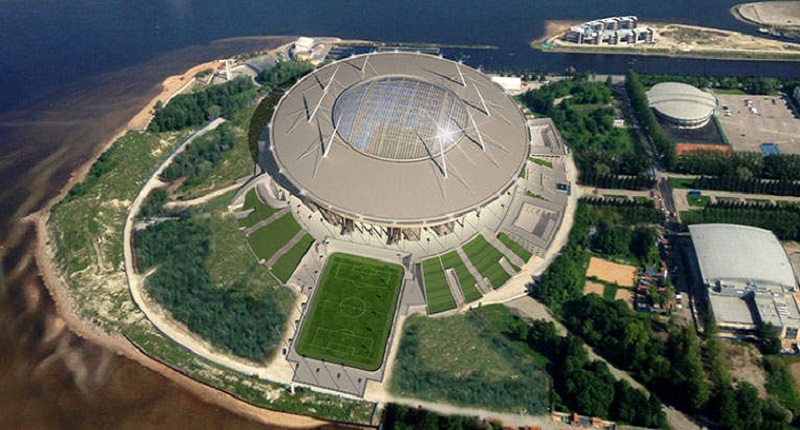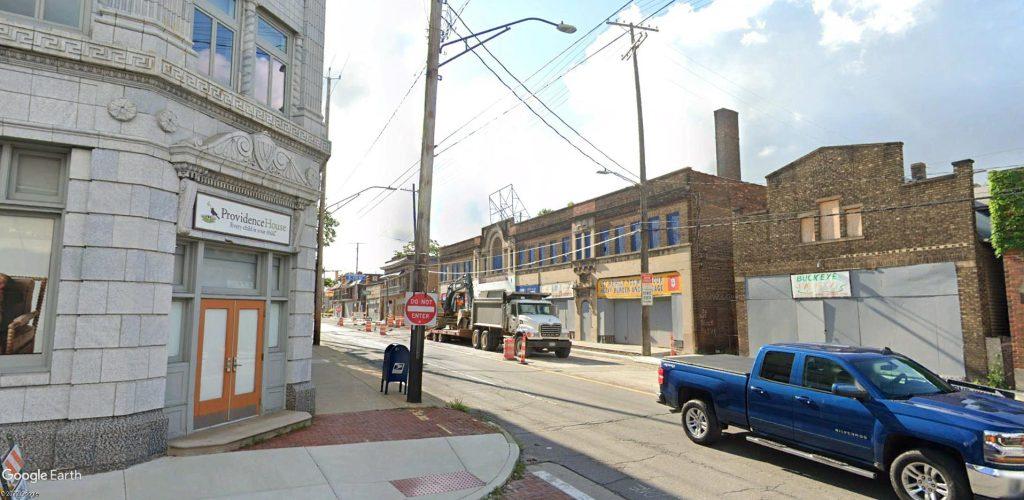
“There is no place like dome” said Congressional sponsors of legislation that created the Lake Erie Island Stadium Authority and awarded $1 billion toward the expected $10 billion cost of building a huge island off-shore from downtown Cleveland, connected by highway and public transportation (CSU Special Collections. Seasteading Institute, KJP). CLICK IMAGES TO ENLARGE THEM.
Sovereign status, free trade agreements sought
Borrowing on the 1970s plan for a Lake Erie jetport, NEOtrans has learned that a $10 billion stadium concept considered for professional football in Cleveland could involve an off-shore site as well as its island gaining potential sovereign status and inclusion in a longstanding free trade program with the USA and potentially Canada.
There are even rumors, based on the creation of a new legal entity via a legislative rider passed stealthily by Congress last year, that the local football team may change its name from the Brook Park Browns to that of the Lake Erie Browns. It would allow it to become the shared home team for a lake-based region of 10 million people.
Both the Detroit Lions of the National Football Conference and the Buffalo Bills of the American Football Conference could be consolidated into this vision and those separate teams would cease to exist if all of the funding is found to build the island and domed stadium.
Like the ill-fated jetport idea originally birthed by Cleveland’s then-Mayor Ralph Locher in 1966 and euthanized by later-Mayor Dennis Kucinich in 1978, the stadium island would be connected to Downtown Cleveland by a 5-mile-long causeway. It would host a highway, a rapid transit line and an aerial tram called Lake Lift.
Unlike other stadium proposals for Cleveland whose costs would be split 50/50 private/public, this plan’s $10 billion cost would be paid 25 percent by the private sector and 75 percent by taxpayers. But the island and its stadium would be authorized and funded mostly by federal dollars resulting from last year’s legislative rider to a bill appropriating funds to an updated study on the mating habits of the Tsetse Fly.
“Congress’ creation of a Lake Erie Island Stadium Authority and directing $1 billion in seed money to it has nothing to do with creating a new island or for building an sports stadium on it,” said John Jacob Jingle Heimer Schmidt, executive director of the authority, told NEOtrans in a message in NEOtrans’ members-only Parlor. “Only a dubious blog such as yours would come to such a conclusion. It’s to create a sanctuary for boosting the population of the Tsetse Fly so we can harvest them. They’re darn good eatin’.”
But both sources who spoke with NEOtrans on the condition of anonymity said that, not only will the new island host a domed stadium with more than 90,000 seats, more features will make it like a city-within-a-city. Those include a medium-sized airport, hotels, restaurants, retail and a Gaga Ball Pit are also planned on the 2,000-acre island.
NEOtrans also noted that the legislation passed last year creates an autonomous governing charter for the land, its own currency called Doofus Dollars, and recognizes the island as a sovereign territory. It also grants the island inclusion in the U.S. Generalized System of Preferences for free trade to nurture it as a “developing country.”
“That’s just coincidence,” Heimer Schmidt said in a follow-up message posted on NEOtrans’ YouTube channel. “There is no connection between this legislation and the planned, transformational and catalytic stadium island in Lake Erie which isn’t even being planned in the first place.”
Interestingly, the legislation also urges Canada to grant a similar trade status to the proposed new island. That recommendation suggests that the new off-shore island could be linked initially to Canada by ferry and air service and someday by a road and rail tunnel under the lake. Specifically, the legislation includes a clause saying “Whereas, if Canada doesn’t grant the trade status, they shall be henceforth be regarded as toqued-up hosers.”
The island and causeway would be constructed on sandstone and gravel fill after excavating millions of tons of earthen material from the former Ravenna Ordinance Plant in Portage County, sources said. They cautioned that the soil at the former World War II arsenal is littered with explosives so they hope that no munitions will detonate during construction or after.
Alternative plans for a floating stadium were considered but rejected by City of Cleveland and Cuyahoga County officials. The idea is akin to floating communities called Seasteading, proposed off the the coast of Miami and French Polynesia. Officials feared it would make it too easy for a professional football franchise to leave Greater Cleveland again and simply float away.
All references to entities or persons living or dead, or even those slightly alive, are purely coincidental.
END





